R.J. Stowell's Blog: rjsomeone, page 69
June 11, 2018
The L.A. Punk Scene
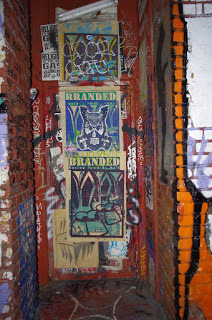 Al's BarTurn back the clock to the early '80s and find a different L.A. The city was a hostile environment back then. The optimism of the '50s and '60s had faded. Gang culture and drug violence were on the rise; the homicide rate nearly doubling (rising from 12.5 per 100,000 to 23.0) in a few short years. The now tourist friendly Hollywood Blvd. was known at the time as a destination for drugs, sex shops, runaways and prostitution. It wasn't "White Riot" London, but L.A. was ready for punk. Just as New York had CBGBs, a whole underground rock culture existed in Los Angeles, a culture that defined itself in opposition to the vanilla bland of the music industry. Bands such as the the Germs, the Weirdos, the Dickies, the Go-Gos, Wasted Youth, Fear, X, Black Flag and the Circle Jerks were all part of a vibrant new scene. With little exception, it wasn't my scene, but at the end of the evening, punk and new wave, and to some degree, heavy metal, congregated at Canter's Deli on Fairfax, like it was sanctuary. Despite a penchant for hot pastrami on rye, you'd usually find me instead at Ben Frank's or Barney's Beanery, but Kenya and Cathy liked Canter's, and when Laura was along, you could bet I'd be there too. More:
Al's BarTurn back the clock to the early '80s and find a different L.A. The city was a hostile environment back then. The optimism of the '50s and '60s had faded. Gang culture and drug violence were on the rise; the homicide rate nearly doubling (rising from 12.5 per 100,000 to 23.0) in a few short years. The now tourist friendly Hollywood Blvd. was known at the time as a destination for drugs, sex shops, runaways and prostitution. It wasn't "White Riot" London, but L.A. was ready for punk. Just as New York had CBGBs, a whole underground rock culture existed in Los Angeles, a culture that defined itself in opposition to the vanilla bland of the music industry. Bands such as the the Germs, the Weirdos, the Dickies, the Go-Gos, Wasted Youth, Fear, X, Black Flag and the Circle Jerks were all part of a vibrant new scene. With little exception, it wasn't my scene, but at the end of the evening, punk and new wave, and to some degree, heavy metal, congregated at Canter's Deli on Fairfax, like it was sanctuary. Despite a penchant for hot pastrami on rye, you'd usually find me instead at Ben Frank's or Barney's Beanery, but Kenya and Cathy liked Canter's, and when Laura was along, you could bet I'd be there too. More:Al’s Bar (Hewitt Street and Traction Avenue, 90013) — Located on the ground floor of the American Hotel, Los Angeles' oldest punk venue, closed in 2001. (Meat Puppets, Sonic Youth, Misfits.)
 Anti-Club (At Helen's Place: 4658 Melrose Ave, 90004) — Eclectic venue opened in 1979 that was originally booked by Russell Jessum, Jack Marquette and Jim Van Tyne. In the mid-80s the Anti-Club moved downtown to Eddy's Burritos under different stewardship. (Descendants, Fear, Angry Samoans.)
Anti-Club (At Helen's Place: 4658 Melrose Ave, 90004) — Eclectic venue opened in 1979 that was originally booked by Russell Jessum, Jack Marquette and Jim Van Tyne. In the mid-80s the Anti-Club moved downtown to Eddy's Burritos under different stewardship. (Descendants, Fear, Angry Samoans.)The Arena (11445 Jefferson Boulevard, 90230) — This place was once part of the Jefferson Arena Bowling complex and was home to punk rock shows in 1980. Now a mini-mall. (Plugz, The Toasters, The Go-Go's.)Atomic Cafe (E. 1st Street and S. Alameda, 90012) — Noodle shop in Little Tokyo that was open until 4am. Nancy, the daughter of the owners, loved punk rock and was successful in bringing in that crowd, including luminaries like Blondie and the Ramones. Closed in 1989.
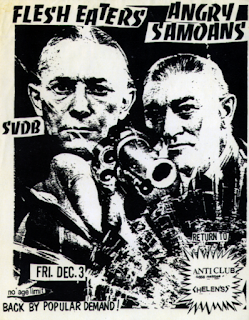 The Anti ClubBlackies (607 N. La Brea, 90036) — Opened in 1979, this smaller club was only around for 9 months. (Bates Motel, The Dickies, Germs.)Brave Dog (438 E 1st St., 90012) — Located near the Atomic Cafe, this underground punk club run by Jack Marquette was open from 1980 to 1982. (Black Flag, Bad Brains, Social Distortion.) Canter's Deli (419 N. Fairfax Avenue 90048) — This Jewish deli somehow managed to be a rock 'n' roll meeting place, a trend that continues today. Cathay de Grande (1600 N. Argyle Avenue, 90028) — Chinese restaurant in Hollywood that in 1980 turned punk when Fred Paterson began DJing and booking bands here. Closed in 1985. (Traitors, Fuck Ups, and famous for "Six Bands - One Buck.")Club 88 (11784 Pico Boulevard, 90064) — After opening in 1977, this club featured a ton of unsigned bands (including Ah-Ga-Oo, a talentless combo that featured former members of Ella and the Blacks; for two weeks in 1980, I sang back-up vocals). Closed in 1981.Club Lingerie (6507 Sunset Boulevard, 90028) — This place has been open under various names since the late 1940s. After the Masque clubs closed, Brendan Mullen booked bands here until 1991. Now this nightclub goes by "Club L." (Bad Religion, TSOL.)Hong Kong Cafe (425 Gin Ling Way 90012) — Club near Madame Wong's that followed down the punk road and became a competitor; the Hong Kong stayed more punk rock and less New Wave. Closed in 1981. (Circle Jerks, Black Flag.)
The Anti ClubBlackies (607 N. La Brea, 90036) — Opened in 1979, this smaller club was only around for 9 months. (Bates Motel, The Dickies, Germs.)Brave Dog (438 E 1st St., 90012) — Located near the Atomic Cafe, this underground punk club run by Jack Marquette was open from 1980 to 1982. (Black Flag, Bad Brains, Social Distortion.) Canter's Deli (419 N. Fairfax Avenue 90048) — This Jewish deli somehow managed to be a rock 'n' roll meeting place, a trend that continues today. Cathay de Grande (1600 N. Argyle Avenue, 90028) — Chinese restaurant in Hollywood that in 1980 turned punk when Fred Paterson began DJing and booking bands here. Closed in 1985. (Traitors, Fuck Ups, and famous for "Six Bands - One Buck.")Club 88 (11784 Pico Boulevard, 90064) — After opening in 1977, this club featured a ton of unsigned bands (including Ah-Ga-Oo, a talentless combo that featured former members of Ella and the Blacks; for two weeks in 1980, I sang back-up vocals). Closed in 1981.Club Lingerie (6507 Sunset Boulevard, 90028) — This place has been open under various names since the late 1940s. After the Masque clubs closed, Brendan Mullen booked bands here until 1991. Now this nightclub goes by "Club L." (Bad Religion, TSOL.)Hong Kong Cafe (425 Gin Ling Way 90012) — Club near Madame Wong's that followed down the punk road and became a competitor; the Hong Kong stayed more punk rock and less New Wave. Closed in 1981. (Circle Jerks, Black Flag.)
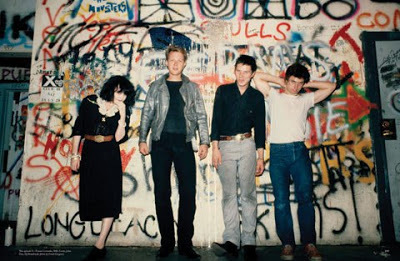 X at the MasqueThe Masque (1655 N. Cherokee, 90028) — Between 1977 and 1979 Brendan Mullen’s basement space was central to the punk scene. After the original Masque was shut-down, Mullen hosted shows at the “Other Masque” (6314 Santa Monica Boulevard, 90038) and then at Club Lingerie. (X, Dickies, Weirdos.) Oki-Dog (Santa Monica Boulevard and N. Vista St., 90046) — Late night staple. Danny's Oki-Dog was a hot dog with chili and pastrami wrapped up like a burrito, and along with a sack of greasy skin on potato wedges, this was hangover food like no one else could do.Tropicana Motel (8585 Santa Monica Boulevard, 90069) — Ground zero for a lot of party action back in the day, from Tom and Rickie to The Dickies. Duke's Coffee Shop was also a hot spot diner. Duke's ended up moving to the Sunset Strip; the motel was torn down in 1988.
X at the MasqueThe Masque (1655 N. Cherokee, 90028) — Between 1977 and 1979 Brendan Mullen’s basement space was central to the punk scene. After the original Masque was shut-down, Mullen hosted shows at the “Other Masque” (6314 Santa Monica Boulevard, 90038) and then at Club Lingerie. (X, Dickies, Weirdos.) Oki-Dog (Santa Monica Boulevard and N. Vista St., 90046) — Late night staple. Danny's Oki-Dog was a hot dog with chili and pastrami wrapped up like a burrito, and along with a sack of greasy skin on potato wedges, this was hangover food like no one else could do.Tropicana Motel (8585 Santa Monica Boulevard, 90069) — Ground zero for a lot of party action back in the day, from Tom and Rickie to The Dickies. Duke's Coffee Shop was also a hot spot diner. Duke's ended up moving to the Sunset Strip; the motel was torn down in 1988.
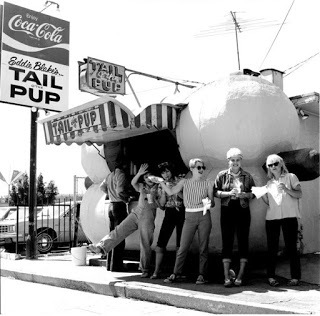 The Go-Go's at Tail of the PupThe Starwood (8151 Santa Monica Boulevard, 90069) — This was one of the major Hollywood clubs and a music industry showcase spot (the other major clubs included the Whiskey, the Troubadour, Gazarri’s, and the Roxy). The Starwood was the first of the big clubs to feature punk and heavy metal acts. Zero Club (1957 N. Cahuenga Boulevard 90068) — Also called Zero Zero. Underground art gallery/after-hours venue open from 1980-85.
The Go-Go's at Tail of the PupThe Starwood (8151 Santa Monica Boulevard, 90069) — This was one of the major Hollywood clubs and a music industry showcase spot (the other major clubs included the Whiskey, the Troubadour, Gazarri’s, and the Roxy). The Starwood was the first of the big clubs to feature punk and heavy metal acts. Zero Club (1957 N. Cahuenga Boulevard 90068) — Also called Zero Zero. Underground art gallery/after-hours venue open from 1980-85.Many nights you'd find me at the Seven Seas across from, what was then, Mann's Chinese Theater (nee Grauman's). It wasn't a venue for bands, but was peopled with teen-aged girls, announced last call at 1:45, and stayed open till 4. Loved that place.
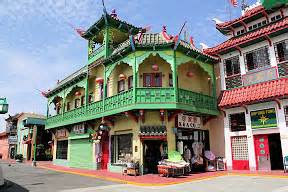 Sunday nights, though, was all about: Madame Wong's (949 Sun Mun Way, 90012) — This spot in Chinatown was briefly booked by well-known promoter Paul Greenstein; later proprietor, Esther Wong (the Dragon Lady), steered the place in a New Wave direction. Closed in 1985, but what a run.Born in Shanghai in 1917, Madame (Esther) Wong immigrated to the United States in 1949. In the 1970s and ‘80s, she owned two restaurants/clubs—Madame Wong's in Chinatown and Madame Wong's West in Santa Monica—that became the beacon for some of the greatest punk and new wave bands of the era, the most famous among them The Mystic Knights of the Oingo Boingo, The Police and, after my time, The Red Hot Chili Peppers.
Sunday nights, though, was all about: Madame Wong's (949 Sun Mun Way, 90012) — This spot in Chinatown was briefly booked by well-known promoter Paul Greenstein; later proprietor, Esther Wong (the Dragon Lady), steered the place in a New Wave direction. Closed in 1985, but what a run.Born in Shanghai in 1917, Madame (Esther) Wong immigrated to the United States in 1949. In the 1970s and ‘80s, she owned two restaurants/clubs—Madame Wong's in Chinatown and Madame Wong's West in Santa Monica—that became the beacon for some of the greatest punk and new wave bands of the era, the most famous among them The Mystic Knights of the Oingo Boingo, The Police and, after my time, The Red Hot Chili Peppers. 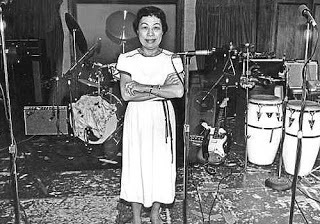 Wong was in her 60s and looked like your typical Chinese grandmother and nothing at all like the woman who would, in many ways, revolutionize rock 'n' roll. When the Polynesian bands she booked were no longer bringing in customers, she turned to rock acts, saw her business take off and a legend was born. Despite the outwardly kind demeanor, Wong scared the shit out of everyone. She'd walk around the club and if she smelled marijuana, she'd grab you by the ear and drag you out like you were one of her kids. Rumor has it (and I believe it) she made the Ramones clean up the graffiti they painted in her restroom before allowing them to play, and they did. She was tough as nails and you didn't want to be on the receiving end of her wrath. I saw her once grab an Asian kid like a steroid addled bouncer, toss him out on the sidewalk and say, "Aren’t you ashamed? A nice Chinese boy should be at home studying, not carrying on like a low-life!" How could you not miss that? Yeah, the good ole days.
Wong was in her 60s and looked like your typical Chinese grandmother and nothing at all like the woman who would, in many ways, revolutionize rock 'n' roll. When the Polynesian bands she booked were no longer bringing in customers, she turned to rock acts, saw her business take off and a legend was born. Despite the outwardly kind demeanor, Wong scared the shit out of everyone. She'd walk around the club and if she smelled marijuana, she'd grab you by the ear and drag you out like you were one of her kids. Rumor has it (and I believe it) she made the Ramones clean up the graffiti they painted in her restroom before allowing them to play, and they did. She was tough as nails and you didn't want to be on the receiving end of her wrath. I saw her once grab an Asian kid like a steroid addled bouncer, toss him out on the sidewalk and say, "Aren’t you ashamed? A nice Chinese boy should be at home studying, not carrying on like a low-life!" How could you not miss that? Yeah, the good ole days.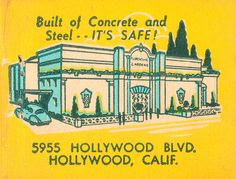 Other venues: The Music Machine on Pico, so many good shows: The Cult, James White & The Blacks, Red Hot Chili Peppers. Seems so long ago (because it was). Radion, across the street for food! New Year's Eve 1985; do you remember? The Starwood - so long ago, like a dream. Rodney spinning records. Wall of Voodoo, the Mau Maus, Human Hands, Black Flag, Geza X. Just fun to be there. Drink your Mickey's Big Mouth in the parking lot. The Whiskey - Like the time in March '84 when Jello Biafra jumped on my head from the stage during a DK show. Nice guy; said, "Sorry." Club Lingerie - Don't remember that night, only there once. The Lhasa on Hudson off Santa Monica Blvd. No alcohol, no one seemed to mind. Artsy shows, like the nude string quartet that backed Lena Lovich. Scream - at that place on Highland, whatever it was called. Oh, to be young, cute and drunk on a Monday night in the 80s. Anti-Club - before that witch Helen took over in '86. Cheap beer, cheap shows, and cheap.... The [Hollywood] Palace - big shows there...Gang of Four, the Pogues, etc. The Hollywood Palladium - still there, of course, but not the same. Too polished now. Were you there for The Smiths? I was. And the Clash in '82? Talking Heads, U2 - met Kenya, Kyra (remember San Fran, guys? Crazy). The New Florentine Gardens - New Order, The Professionals. Lotsa teens, bright 80s colors. Cathay de Grande - lotsa nights there: Gun Club, Kommunity FK, etc. What's not to like? There was a New Romantic club there in early '81, can't remember the name. Seven Seas - known as the Seven Sleaze, Hollywood Blvd. - the place to pick up teen-age girls; order as many drinks as you want at ten minutes to two, stayed open till 3. The Continental - across from the Capitol Records tower - new wave DJ in an old Hollywood dive, women at the bar left over from '63; open till 4, if you slept in the car, breakfast at the Tick Tock across the street. The Firefly on Hollywood Blvd., just a dream now - like so many.
Other venues: The Music Machine on Pico, so many good shows: The Cult, James White & The Blacks, Red Hot Chili Peppers. Seems so long ago (because it was). Radion, across the street for food! New Year's Eve 1985; do you remember? The Starwood - so long ago, like a dream. Rodney spinning records. Wall of Voodoo, the Mau Maus, Human Hands, Black Flag, Geza X. Just fun to be there. Drink your Mickey's Big Mouth in the parking lot. The Whiskey - Like the time in March '84 when Jello Biafra jumped on my head from the stage during a DK show. Nice guy; said, "Sorry." Club Lingerie - Don't remember that night, only there once. The Lhasa on Hudson off Santa Monica Blvd. No alcohol, no one seemed to mind. Artsy shows, like the nude string quartet that backed Lena Lovich. Scream - at that place on Highland, whatever it was called. Oh, to be young, cute and drunk on a Monday night in the 80s. Anti-Club - before that witch Helen took over in '86. Cheap beer, cheap shows, and cheap.... The [Hollywood] Palace - big shows there...Gang of Four, the Pogues, etc. The Hollywood Palladium - still there, of course, but not the same. Too polished now. Were you there for The Smiths? I was. And the Clash in '82? Talking Heads, U2 - met Kenya, Kyra (remember San Fran, guys? Crazy). The New Florentine Gardens - New Order, The Professionals. Lotsa teens, bright 80s colors. Cathay de Grande - lotsa nights there: Gun Club, Kommunity FK, etc. What's not to like? There was a New Romantic club there in early '81, can't remember the name. Seven Seas - known as the Seven Sleaze, Hollywood Blvd. - the place to pick up teen-age girls; order as many drinks as you want at ten minutes to two, stayed open till 3. The Continental - across from the Capitol Records tower - new wave DJ in an old Hollywood dive, women at the bar left over from '63; open till 4, if you slept in the car, breakfast at the Tick Tock across the street. The Firefly on Hollywood Blvd., just a dream now - like so many.A plea: When I do my research I am constantly at a loss for photos. I own virtually none of the photographs I post, but as a not for profit venture, I have few qualms about my copyright infringement; still I find it distressing that so little photojournalism exists for the era, ho-hum. If you know me, knew me, remember me, hate me, blew me, avoided me, what-evered me, and you have photos you'd like to share, email me. Thanks.
Published on June 11, 2018 04:45
June 10, 2018
Kid Myself I'm Having Fun
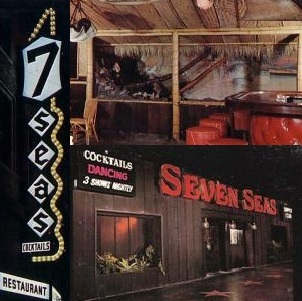 Every little facet of our lives enhances who we become. As we get older, we get more comfortable in our own skins. You'd think that with all I am able to report in these posts, that I had paid more attention. I didn't; too wrapped up in the cool to really get the details (if I had an eidetic memory, you'd get three or four posts per day! - if I could type faster). No matter where you were, how trendy or chic (didn't matter if River Phoenix was there or some actress you had a crush on), there was always somewhere cooler to be. Leaving a club or a bar, that outward display of dissatisfaction, was the ultimate kiss off, and the dernier cri that you were cool's cool.
Every little facet of our lives enhances who we become. As we get older, we get more comfortable in our own skins. You'd think that with all I am able to report in these posts, that I had paid more attention. I didn't; too wrapped up in the cool to really get the details (if I had an eidetic memory, you'd get three or four posts per day! - if I could type faster). No matter where you were, how trendy or chic (didn't matter if River Phoenix was there or some actress you had a crush on), there was always somewhere cooler to be. Leaving a club or a bar, that outward display of dissatisfaction, was the ultimate kiss off, and the dernier cri that you were cool's cool. That said, on a myriad of levels, I hated my wild years. Cool was too hard. I lived, at the time, in a seedy deco apartment on Orange Street in the Miracle Mile, in a building that a friend called "El Presidente," as if it were a cheesy bordello in Tijuana. Kenya and Cathy lived down the hall, and I was never more content than when the girls would just come over and we'd get high and dance around the living room and make pancakes. I liked daytime better, shopping on Melrose at Cowboys and Poodles or Poseur and Vinyl Fetish, grabbing a chili-dog at Pink's, coming back to the apartment and making cocktails. Ultimately, though, you'd step out into the night. Girls just want to have fun, you know?
 Hollywood Blvd.Nonetheless, there was one club where I felt at ease, a place where I seemed to fit in best. I grew up in Mid-Century Modern L.A. and by the 80s, in my 20s, amidst the punks and the metal heads, there was a nostalgic revival of early 60s style, and my circle of fiends bought into it in a most tragically hip way. That theme fit well onto Hollywood Blvd., right across from the Chinese and C.C. Brown's. Any given night you could find me, there at the Seven Seas.
Hollywood Blvd.Nonetheless, there was one club where I felt at ease, a place where I seemed to fit in best. I grew up in Mid-Century Modern L.A. and by the 80s, in my 20s, amidst the punks and the metal heads, there was a nostalgic revival of early 60s style, and my circle of fiends bought into it in a most tragically hip way. That theme fit well onto Hollywood Blvd., right across from the Chinese and C.C. Brown's. Any given night you could find me, there at the Seven Seas.While Hollywood Blvd. in the 80s was at its worst, the once glamorous restaurants and venues struggling to survive, we'd invaded a storied Hollywood nightspot from the 30s. The Seven Seas in Hollywood was one of the Tiki nightclubs, just down the street from Don the Beachcomber's, that were all the rage in the late 50s. The inside was decorated with tropical plants, nautical souvenirs, lava rocks and a corrugated metal roof on which, several times a night, there'd be a rainstorm replete with thunder sounds from a sound effects record. When I was little, my parents took me there for my birthday, one of the few times we spent together as a family. Nothing within had really changed by the 80s, not the red pleather banquettes or the velvet oil paintings, but club kids had commandeered the 7.
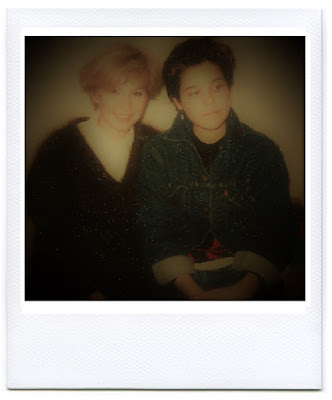 Cathy and KenyaTo set the scene, we'd get there at ten, drink other people's drinks when they'd get up to dance, or sit at the bar. It was New Order and Depeche Mode, Haircut 100 and ABC, and at 1:50am, when liquor laws dictated the time, they'd turn on the lights, last call, and you'd order two or three more drinks and the party would continue. At 3:00 they'd play "Springtime for Hitler" from The Producers, I don't know why, and sweep the stragglers out the door. The banquette in the corner was ours, like we were Frank Sinatra or something, like we were the chairmen of the board. From there I could survey my little kingdom, and plot this conquest or that, the little blonde over there or, hmm, she’s new…
Cathy and KenyaTo set the scene, we'd get there at ten, drink other people's drinks when they'd get up to dance, or sit at the bar. It was New Order and Depeche Mode, Haircut 100 and ABC, and at 1:50am, when liquor laws dictated the time, they'd turn on the lights, last call, and you'd order two or three more drinks and the party would continue. At 3:00 they'd play "Springtime for Hitler" from The Producers, I don't know why, and sweep the stragglers out the door. The banquette in the corner was ours, like we were Frank Sinatra or something, like we were the chairmen of the board. From there I could survey my little kingdom, and plot this conquest or that, the little blonde over there or, hmm, she’s new…As a writer I'm lucky; it's a part of my job description to relive the past, but I always liked it best when the lights came back on and it was time to go home.
I think it's time to cook a meal
To fill the emptiness I feel
Spent my money going out
I've nothing I'm left without
Clean my teeth and comb my hair
Look for something new to wear
Start the nightlife over again
Kid myself I'm having fun
-Bedsitter, Soft Cell
Published on June 10, 2018 05:34
June 9, 2018
The Masque - 40 Years Ago - Abandoned Places
 Retrospective: In Awe of Its BeautyI was at the Masque just once for half an hour. That's it. That's my history with L.A. punk, when push comes to shove. DepKids were punky, trendy not punks - we were who punks beat up, the new wave (the next wave). We fit in with the Mods; we'd hang at the ON Club, get drunk enough to make an appearance at the Atomic Café or the Cathay de Grande, but our home was the Lhasa or down Hollywood Blvd. at the Seven Seas across from Grauman's Chinese. We were Orange Juice and Depeche Mode, Haircut 100; the Masque kids were Darby Crash, the Germs or the Circle Jerks. We may have even been friends - we'd end up at Danny's Oki Dog or Canter's Deli at 3am (a demilitarized zone) and share a hot pastrami with Zander Schloss (long as we paid - no one ever paid), but we didn't last long on their turf.
Retrospective: In Awe of Its BeautyI was at the Masque just once for half an hour. That's it. That's my history with L.A. punk, when push comes to shove. DepKids were punky, trendy not punks - we were who punks beat up, the new wave (the next wave). We fit in with the Mods; we'd hang at the ON Club, get drunk enough to make an appearance at the Atomic Café or the Cathay de Grande, but our home was the Lhasa or down Hollywood Blvd. at the Seven Seas across from Grauman's Chinese. We were Orange Juice and Depeche Mode, Haircut 100; the Masque kids were Darby Crash, the Germs or the Circle Jerks. We may have even been friends - we'd end up at Danny's Oki Dog or Canter's Deli at 3am (a demilitarized zone) and share a hot pastrami with Zander Schloss (long as we paid - no one ever paid), but we didn't last long on their turf.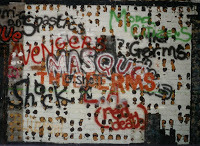 I went to high school with Belinda Carlisle out in Ventura County, as suburban as suburban gets. The Newbury Black and Gold. Belinda was a 10th grade cheerleader. By the time she was 19, she wouldn't talk to me anymore; I represented something to her. I was new wave and younger, and she was punk, yet we'd run into each other at the Aardvark or Flip (vintage clothing stores on Melrose), and when no one was looking she'd say, "Remember when..." I had a real respect for her.
I went to high school with Belinda Carlisle out in Ventura County, as suburban as suburban gets. The Newbury Black and Gold. Belinda was a 10th grade cheerleader. By the time she was 19, she wouldn't talk to me anymore; I represented something to her. I was new wave and younger, and she was punk, yet we'd run into each other at the Aardvark or Flip (vintage clothing stores on Melrose), and when no one was looking she'd say, "Remember when..." I had a real respect for her. 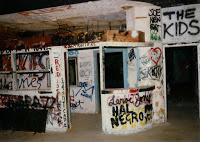
I couldn't be a punk. It took a rugged spunk I didn't possess. Indeed, my claustrophobia started at the Masque, just going down those steps - a dank stairwell that led down to a graffitied concrete basement with no way out. It smelled like sweat and piss. I don't know how she did it; she was this sweet thing. Twenty minutes on I got socked in the face when some nasty-ass skinhead started messing with Kenya. She turned around, looked at me and said, "You gonna let him talk to me like that?" Well, frankly, I was, but I can't now. can I? Ended up a war wound; I milked it; got lots of sympathy from the little new wave girls at the Seven Seas.
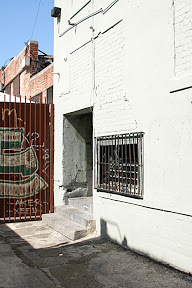 Entryway on CherokeeThe Masque opened August 18, 1977 on the southwest corner of Hollywood Boulevard and Cherokee (1665 N. Cherokee), the Pussycat theater next door. The club was owned and operated by Scottish expat Brendan Mullen. It was originally intended as a cheap rehearsal spot for Brendan and a place to live. Brendan quickly became the leader, like Fagan, to every kind of street urchin and ragamuffin that walked the streets of Hollywood Boulevard. By 1979 the club was closed. It wasn't my scene; that was yet to come, but it was a scene, a vital one, unforced, unabiding, The Masque just happened. This was pre-crack, pre-AIDS, pre-Reagan, back when things were allowed to just happen. In the way of tribute, the following is a list of the bands who graced the Masque in its short reign and in my absence: The Suburban Lawns, Black Randy and the Metrosquad, The Germs, Geza X, The Bags, The Screamers, The Weirdos, F-Word, The Motels and, of course, The Go-go's.
Entryway on CherokeeThe Masque opened August 18, 1977 on the southwest corner of Hollywood Boulevard and Cherokee (1665 N. Cherokee), the Pussycat theater next door. The club was owned and operated by Scottish expat Brendan Mullen. It was originally intended as a cheap rehearsal spot for Brendan and a place to live. Brendan quickly became the leader, like Fagan, to every kind of street urchin and ragamuffin that walked the streets of Hollywood Boulevard. By 1979 the club was closed. It wasn't my scene; that was yet to come, but it was a scene, a vital one, unforced, unabiding, The Masque just happened. This was pre-crack, pre-AIDS, pre-Reagan, back when things were allowed to just happen. In the way of tribute, the following is a list of the bands who graced the Masque in its short reign and in my absence: The Suburban Lawns, Black Randy and the Metrosquad, The Germs, Geza X, The Bags, The Screamers, The Weirdos, F-Word, The Motels and, of course, The Go-go's.Unlike bands like the Pistols, The Ramones, Siouxsie and The Clash, L.A. punk never had the same notoriety as those iterations in London or New York, but it was no less influential. There are few photos of The L.A. punk scene at the Masque, yet unlike The Mudd Club or CBGBs, what was the Masque remains pretty much intact. I remember the rank odor, the sticky floors and the punch in the eye, but I look at these photos, and there is a beauty there, a beauty that eluded me in '79; it's too bad. Sometimes you just have to wake up and smell the vomit.
A documentary film on the Masque is available here . For their video "Perfect," Smashing Pumpkins revisited the Masque, bringing it alive one last time. (Click the image below to see the vid.)
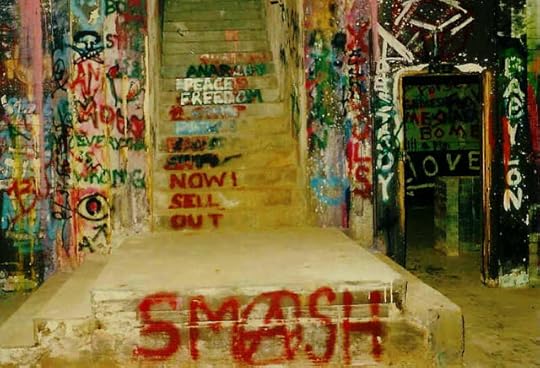 The Only Way Out is Through
The Only Way Out is Through
Published on June 09, 2018 06:11
the masque
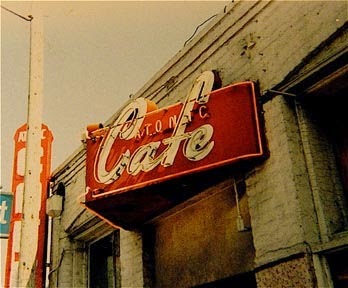 On February 19, 1942 FDR signed Executive Order 9066 forcing the relocation of Japanese-Americans to internment camps, including many citizens whose parents and grandparents were born in this country. Isei, Nisei and Sansei, 1st, 2nd and 3rd generation Japanese Americans, were taken to the camps, and the area of Los Angeles surrounding 1stand Alameda was soon repopulated by African-Americans instead, for a time it was even nicknamed Bronzeville.
On February 19, 1942 FDR signed Executive Order 9066 forcing the relocation of Japanese-Americans to internment camps, including many citizens whose parents and grandparents were born in this country. Isei, Nisei and Sansei, 1st, 2nd and 3rd generation Japanese Americans, were taken to the camps, and the area of Los Angeles surrounding 1stand Alameda was soon repopulated by African-Americans instead, for a time it was even nicknamed Bronzeville. When the war was over in 1945, those able to return and rebuild, did so. In 1946, Ito and Minoru Matoba opened a diner serving noodles and Japanese fare and gave it the rather bold name, Atomic Café, despite the very recent atrocities at Hiroshima and Nagasaki. "People will always remember the atomic bomb. Maybe they will always remember the Atomic Café," said Matoba.

By the mid-seventies central LA had evolved yet again and years of suburban flight caused the area around the Atomic to became a scary and brave new world, but the café lingered on. When punk music hit the city in 1977, the Atomic Café was reborn. Nancy Sekizawa, daughter of the owners and a former singer with the band, Hiroshima, decided to plaster the walls and ceiling of the café with posters and fliers for punk bands. The jukebox, already a mix of standards, classic rock and roll and Japanese hits also began to reflect this shift. In short order, the jukebox at the Atomic was perfectly suited to its clientele and provided the soundtrack for a unique cultural mash-up.
Paige Osburn, in an article for LA Weekly wrote, "Once upon a time, Sid Vicious walked into a tiny café in Little Tokyo, got six orders of fried rice and started a food fight. On another occasion, David Byrne ordered an Egg Foo Yung and a glass of milk. And on different night, an all-girl band from Los Angeles picked up a plate of GogoChicken and decided they liked the name."
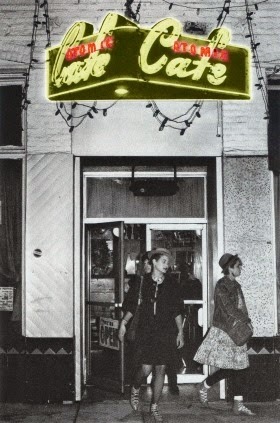 "I broke my arm one time when I was in kindergarten and everybody [at the Café] signed it," recalls Zen Sekizawa, Nancy's daughter. "It was like, the Screamers logo, anarchy signs - people writing 'fuck you' and putting out their cigarettes on it. Then of course I went to school and my teacher was horrified. That's when I realized, 'Oh wow, we have a different lifestyle than other people.'"
"I broke my arm one time when I was in kindergarten and everybody [at the Café] signed it," recalls Zen Sekizawa, Nancy's daughter. "It was like, the Screamers logo, anarchy signs - people writing 'fuck you' and putting out their cigarettes on it. Then of course I went to school and my teacher was horrified. That's when I realized, 'Oh wow, we have a different lifestyle than other people.'"The Atomic was an incredible mix of punk, ska, locals (Asians), celebs and great times centered around music. The café closed in 2013, albeit far removed from its punk heyday, and one year ago today the iconic building at 1st and Alameda in Little Tokyo was demolished. (Here’s where an ex-Angeleno wants to type a sad face.) The hundred year old bricks bear witness to the evolution of a city. A city and a café where electric railway cars once rolled past and punks, artists and Yakuza sat side by side eating noodles and listening to the Clash, Gene Vincent and Frank Sinatra. As an aside, I find something quite interesting. I am a Sansei. No, not from Japan. My grandmother came over from Germany in 1908, an Isei, and I was born to a German-American mother, the Nisei who was never interned in a camp, but continued to live instead in a charming little home in Clifton, NJ.
Published on June 09, 2018 06:10
The O.N. Klub - Mods in L.A.
 We'd sit under the bridge and knock down a case of Mickey's Big Mouth; rich kids from the Valley out of place in East L.A. 1982. The L.A. mod scene, based on the popularity of 2-Tone in England and L.A.'s own Untouchables, had invaded a rough and ramshackle beer bar that hadn't served anyone but locals for twenty years, and few of them. Suddenly it was hundreds of L.A. mods, kids with scooters, kids there to fight, sex in the bathroom, dirty walls - call it what it you will, but it was alive. It was Motown and Gordy; it was The Who; it was The Jam; it was The Untouchables. The Oriental Nights was now the ON Klub.
We'd sit under the bridge and knock down a case of Mickey's Big Mouth; rich kids from the Valley out of place in East L.A. 1982. The L.A. mod scene, based on the popularity of 2-Tone in England and L.A.'s own Untouchables, had invaded a rough and ramshackle beer bar that hadn't served anyone but locals for twenty years, and few of them. Suddenly it was hundreds of L.A. mods, kids with scooters, kids there to fight, sex in the bathroom, dirty walls - call it what it you will, but it was alive. It was Motown and Gordy; it was The Who; it was The Jam; it was The Untouchables. The Oriental Nights was now the ON Klub.Several years ago I came across an article by Kevin Long (The Untouchables). Here's an abbreviated repost:
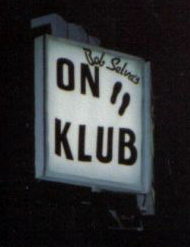 Epicenter of a Scene
Epicenter of a Scene
By Kevin Long
In the early 1980s, on a less than glittering strip of Sunset Boulevard, was a tiny and unremarkable dive called the O.N. Klub. The O.N. Klub, or simply “the ON” to its habitues, was located at 3037 W. Sunset in Silver Lake, then a down-at-the-heel commercial and residential area located just east of Hollywood.
It was at the O.N. Klub that the spark of a brief, but magical, alternative music scene first caught fire in 1980. The scene was an odd amalgamation of sorts, combining the sound and style of 1960’s swinging London with the music of original and second-wave Jamaican and English ska, the dance-able grooves of American Sixties soul and R&B, while tapping into the DIY spirit and independence of late Seventies punk rock.
Unlike punk rock, however, this scene made no claims of political or social upheaval; revolution was not on the agenda. Nevertheless, it was not entirely apolitical either, for if this music scene had a manifesto it was simply one of inclusion, where African-American kids dressed as sharply as their Latino brethren, where Asian-American girls were as coolly detached as their white sisters, where kids from South Central and La Cãnada amicably (and endlessly) debated the merits of Vespa v. Lambretta, not unlike white English boys did half-a-world away and a generation earlier.This was the colorful and wildly popular L.A. mod scene, circa 1980-1984. It all began at a dingy little club in a once dingy corner of the city.
The pivotal moment in the rise of the L.A. punk scene occurred in 1977 when the legendary Masque club first opened its doors. In L.A., bands such as X, the Dickies, the Germs, the Weirdos, the Go-Go’s and others found a home at the Masque, and the local punk scene was underway.
In L.A., the mod scene developed with the ’79 release of “Quadrophenia” kick-starting mod awareness, though it would take another year before mods began to have even minimal presence in local clubs. L.A. mods wore suits in tribute to the early ‘60s American soul stars they idolized. But a suit also looked sharp on the dance floor, and that never hurt when looking to meet someone. Ask any scooter-less, suit-wearing mod what it was like, for example, to board a bus in L.A. in 1980, and he would likely equate it to being viewed as a visitor from a distant galaxy. RTD bus driver to self: “Three old ladies sitting up front? Check. Leather-clad punk with purple Mohawk and bike chain? Check. Pimply-faced metal dude with big hair and small brain? Check. Clean cut teenager wearing ‘60s suit and tie? Che…what the…? Not on my watch, mister!” And in a cloud of diesel, clang, clang, go the RTD doors. Strange days, indeed.
By 1981, the ON Klub had survived its first year. The next influential step occurred when [The O.N. Klub] booked on a regular basis the Boxboys, the first genuinely homegrown L.A. ska band. The Boxboys were the DIY bridge that spanned that vast and mythical chasm between dance floor and stage for L.A.’s first mod band, the Untouchables. The Boxboys influence on the Untouchables exceeded that of the far-removed English Two-Tone and mod sets the group admired; whereas the English bands gave shape to the dream, the Boxboys embodied it.
The Untouchables were mods who made no apologies for their love of Sixties American soul and British power pop in an era where, at least on the L.A. alternative scene, hardcore punk (i.e., testosterone-driven SST bands) was all the rage. It wasn’t just that the Untouchables played a mix of music inspired by black and white artists, but rather that the band itself was racially diverse.
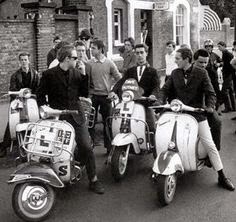 It didn’t take long for word to get out about the band or the club. Soon the Untouchables’ several Vespas and Lambrettas parked out front were joined by dozens of others. All corners of the city were represented on the dance floor in a crazy quilt of culture, color and style.
It didn’t take long for word to get out about the band or the club. Soon the Untouchables’ several Vespas and Lambrettas parked out front were joined by dozens of others. All corners of the city were represented on the dance floor in a crazy quilt of culture, color and style.Before long the mod scene at the ON Klub took on a life of its own. Scooters were regularly lined up nearly the length of the block in front of the club, which got the attention of the cops, which, in turn, got the attention of the local media. Suddenly, mod was an L.A. buzzword. By 1984 the scene had swelled to over 5,000 kids. It grew to include a dozen or more bands in and around L.A. and Orange counties, and many clubs adopted a “mod night” to cater to the ever expanding mod army, while other mod events flourished across the city. No longer an underground scene, the mod phenomenon soon stretched the breadth of California to exceed in numbers any other mod scene in America before or since.
My glasses aren't as rosy colored as Kevin's. I remember skinheads ambushing mods in back alleys. I remember gang activity that didn't necessarily embrace the perceived effete mod style sense. But I remember a scene that was alive and ours, exciting, a little dangerous, and unforgettable.

Published on June 09, 2018 04:37
June 8, 2018
Orchestral Manoeuvres In The Dark
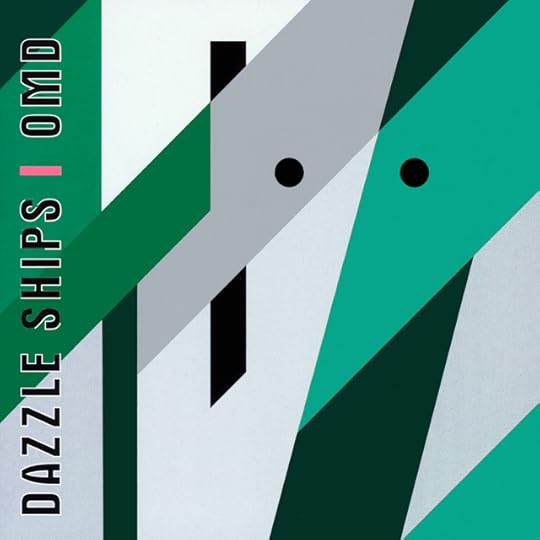
Dazzle Ships (AM6)
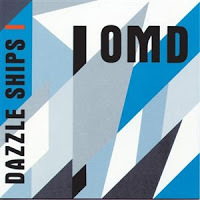 Peter SavilleDazzle Ships was one of those stellar albums that rip away popularity and leave many shaking their heads – meanwhile a scant few come to the realization that this is exactly the LP that should have been release (in that ars gratia artis ideology that few are willing to pursue once the taste of success rears its hideous mug). Following the beautiful simplicity of Architecture & Morality, the public wanted more; like a first taste of sugar on cereal, the kiddy populous wanted Froot Loops. They got Dazzle Ships (the cereal equivalent to Post Toastees).
Peter SavilleDazzle Ships was one of those stellar albums that rip away popularity and leave many shaking their heads – meanwhile a scant few come to the realization that this is exactly the LP that should have been release (in that ars gratia artis ideology that few are willing to pursue once the taste of success rears its hideous mug). Following the beautiful simplicity of Architecture & Morality, the public wanted more; like a first taste of sugar on cereal, the kiddy populous wanted Froot Loops. They got Dazzle Ships (the cereal equivalent to Post Toastees).
A melancholy concept album steeped in Cold War-era existential angst and Kraftwerk-indebted technological fetishism, Dazzle Ships was a huge commercial misstep for Orchestral Manoeuvres In The Dark (please don’t call this iteration OMD). It was also a work of inventive and affecting art, one whose scathing reception upon release shocked the synth-pop innovators into chasing New Romantic pabulum and John Hughes soundtracks. But from the short-circuit snaps of “Radio Waves” and “Telegraph” to the mournfully post-apocalyptic ballads “The Romance Of The Telescope,” “Silent Running,” and “Of All The Things We Made,” Dazzle Ships is a bravely ambitious statement, a forward-thinking gamble in a genre that became increasingly swallowed by cheap resignation. Dazzle Ships is an album for 3am, an LP which lacks song and substance, instead it is art and a statement that retrospectively can be realized in the same way that we appreciate Peter Saville’s ambient interpretation of the Edward Wadsworth painting entitled Painting of Dazzle-ships in Drydock at Liverpool, 1919.
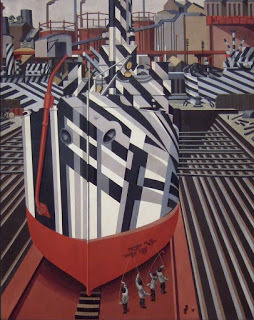 Edward Wadsworth, 1919[During World War I, the British and United States Navies adopted dazzle ship camouflage on their warships, resulting in "razzle dazzle" vessels that looked like the brainchild of Picasso. Despite the widespread use, nobody knew for sure whether razzle-dazzle worked; a computer-based study on human visual perception yielded mixed results.]
Edward Wadsworth, 1919[During World War I, the British and United States Navies adopted dazzle ship camouflage on their warships, resulting in "razzle dazzle" vessels that looked like the brainchild of Picasso. Despite the widespread use, nobody knew for sure whether razzle-dazzle worked; a computer-based study on human visual perception yielded mixed results.]Architecture & Morality (AM9)
Played this to absolute death - scratched to fuck it is, to the point of being unplayable, sigh! I must remember to hit up Amazon and invest in a 180 gram copy. Why? Because it's eternally fantastic, that's why, and part of the ambient filmscore to back my youth. "The New Stone Age" is a calculated risk for the album's introduction, as its dissonance belies the serene pop/art tracks to follow, a risk that paid off in spades. "Souvenir" and "Joan Of Arc (Maid Of Orleans)" are pillars that still hold up the Orchestral Manoeuvres In The Dark card castle in my mind. Epic beautiful songs. Of course "Souvenir" became a huge in the UK and an alternative staple in the U.S, as did the dirgy "Joan of Arc" among the Joy Division Shoegaze set. Architecture & Morality's other joys include "Sealand," an artsy, pastoral romp dripping with melancholy synth lines and enough moody transport to wisk one off to Bath, all that's missing is seagull samples (thankfully). The title track, which carries on the tradition of Organisation's "Stanlow," ( industrial hisses, etc.) acts as a nice respite on the way to the super poppy "Georgia." Belatedly (critical reception was cool), Music Maker described Architecture & Morality as "the first true masterpiece of the eighties." Robin Denselow in The Guardian said that "She's Leaving" was "the sort of song that Paul McCartney might have written if he'd grown up with the synthesizer bands of '81." That's a bit of an overstatement, the kind of critical backtracking apparent when an LP is overlooked upon its release (indeed the band decided not to release "She's Leaving" as a single).
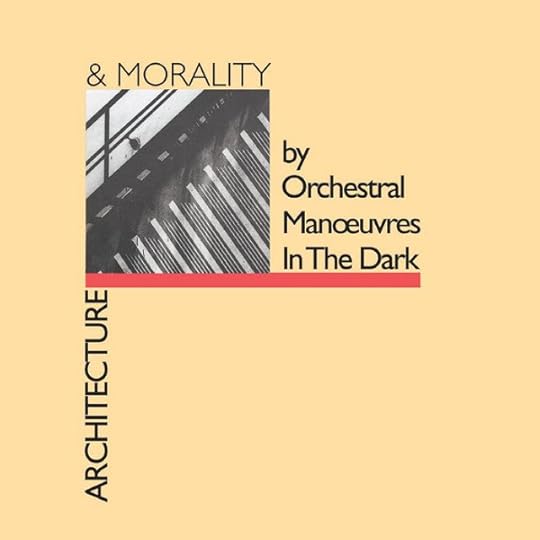
Published on June 08, 2018 04:36
June 7, 2018
Architecture and Morality
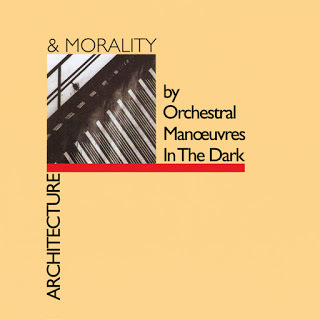 Revolutionary in that it brought electronica to the public's attention, Architecture and Morality is Orchestral Maneuver in the Dark's most distinctive offering. (The title suggested by Martha Ladley of Martha and the Muffins after reading David Watkins' text, similarly titled.) This is wildly artistic art pop, essentially crafting electronica out of New Wave. Some would pinpoint Depeche Mode or Gary Numan, while others would arguably insist on Kraftwerk, but the latter was far too German to serve as a zündkerze (spark plug) to electronic pop. Here, instead, we find Oscar Wilde on synth and a post-modern take on 20th Century romanticism. The melodies are simple, the lyrics painfully poignant, and the wash of sustain and release ecstatic. At times Orchestral Maneuver in the Dark could be chillingly cold war, as distant and alienated as Berlin era Bowie (Andrew McCluskey's at times droning, off-key vocals only heighten the alienation); at times they could be happy and poppy (think "Electricity"). OMD (a nickname afforded them in a more accessible future) were the commercial voice of avant-garde artists like Tangerine Dream or Mike Oldfield, and in no uncertain terms, were the progenitors of techno and ambient music.
Revolutionary in that it brought electronica to the public's attention, Architecture and Morality is Orchestral Maneuver in the Dark's most distinctive offering. (The title suggested by Martha Ladley of Martha and the Muffins after reading David Watkins' text, similarly titled.) This is wildly artistic art pop, essentially crafting electronica out of New Wave. Some would pinpoint Depeche Mode or Gary Numan, while others would arguably insist on Kraftwerk, but the latter was far too German to serve as a zündkerze (spark plug) to electronic pop. Here, instead, we find Oscar Wilde on synth and a post-modern take on 20th Century romanticism. The melodies are simple, the lyrics painfully poignant, and the wash of sustain and release ecstatic. At times Orchestral Maneuver in the Dark could be chillingly cold war, as distant and alienated as Berlin era Bowie (Andrew McCluskey's at times droning, off-key vocals only heighten the alienation); at times they could be happy and poppy (think "Electricity"). OMD (a nickname afforded them in a more accessible future) were the commercial voice of avant-garde artists like Tangerine Dream or Mike Oldfield, and in no uncertain terms, were the progenitors of techno and ambient music.Architecture and Morality was not evolutionary, however; instead it was brand new, establishing the idea that a stage set up for live music could include nothing that even resembled a traditional instrument. A&M was the first foray into sounds that had never before been heard by human ears. Depeche Mode would end up more popular and even embrace the genre and philosophy more fully, but this is the LP that opened the floodgates.
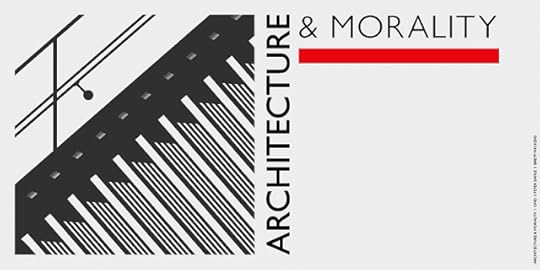
Orchestral Maneuvers in the Dark were part of that great period, post punk and disco, when independent radio sought them out, along with Cocteau Twins, Kate Bush, and U2, an undercurrent a level below Peter Gabriel. There was a gossamer quality to the genre that unlike most music of its time, holds up marvelously. It was OMD that perfected the marriage between gorgeous melody and ambient experimentation. A&M incorporated choral tapes here, mellotrons there, electronic percussion in league with military drums and primitive ambient sounds set amongst the synth-wash of anthems like "Sealand," an artsy, ambient romp dripping with melancholic synth lines and enough mood to cover a beach. From the 12" hits like "Joan of Arc (Maid of Orleans" to "Souvenir" to the atmospheric "The Beginning and the End," what may be most intriguing is the fact that Architecture and Morality is such a monumental period piece (a "period" that vanished in the blink of an eye). Ethereal 80s synths, tape loops and distant sampled war drums never let us forget the serious-minded nature of the LP and the era. Perhaps the most progressive track on the album is "Georgia" an poppy eschatological bomb age hymn, utilizing tape loops of long wave radio synced perfectly with the music and berserk bursts of electronic noise. It certainly points the way forward to another astonishing album, 1983's far less accessible Dazzle Ships, not to mention Black Celebration, Simple Minds and Ultravox, and more recently, bands like M83, Air and MGMT.
Published on June 07, 2018 05:31
June 6, 2018
12"
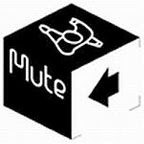 The early 80s saw a rebirth of the three minute pop song, a throwback to the 60s after so many years of AOR. Songs like The Cure's "Boys Don’t Cry" didn't even hit the three minute mark. Yet it was the British 12" that was unique to new wave. Independent artist labels like Factory (Joy Division, New Order) and Mute (Depeche Mode) established the 12" single as a truly 80s icon in what would prove the last vestige of our tactile love of vinyl. In LA we'd pound Melrose Avenue at Flip and Cowboys and Poodles (Whitey and Paul) for vintage slacks and paisley shirts, then wander about Neo80 before hitting up Pink's for chili dogs. The ritual destination though was Vinyl Fetish, 7035 Melrose Ave., home to the import single, a virtual candy store with all the vinyl hanging from the walls in clear plastic sleeves. There we'd hang for hours listening to the new Endgames remix or "Girls On Film." Like those stores on Melrose, mostly gone now, replaced by Alexander McQueen and Johnnie Rockets, the 12" is a part of our past. Among the best:
The early 80s saw a rebirth of the three minute pop song, a throwback to the 60s after so many years of AOR. Songs like The Cure's "Boys Don’t Cry" didn't even hit the three minute mark. Yet it was the British 12" that was unique to new wave. Independent artist labels like Factory (Joy Division, New Order) and Mute (Depeche Mode) established the 12" single as a truly 80s icon in what would prove the last vestige of our tactile love of vinyl. In LA we'd pound Melrose Avenue at Flip and Cowboys and Poodles (Whitey and Paul) for vintage slacks and paisley shirts, then wander about Neo80 before hitting up Pink's for chili dogs. The ritual destination though was Vinyl Fetish, 7035 Melrose Ave., home to the import single, a virtual candy store with all the vinyl hanging from the walls in clear plastic sleeves. There we'd hang for hours listening to the new Endgames remix or "Girls On Film." Like those stores on Melrose, mostly gone now, replaced by Alexander McQueen and Johnnie Rockets, the 12" is a part of our past. Among the best: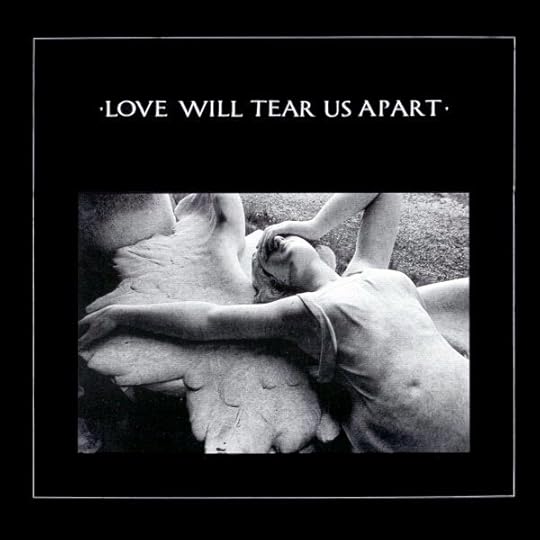 "Love Will Tear Us Apart Again" (AM10) by Joy Division (FAC 23.12, 1980). The first iconic 12" cover. Voted in 2002 as NME's best single of all time. No difference in the 12" or the 7" with the exception of the cover (the 7" has no graphic, just the printed title - still with some Peter Saville swag). The single version is the A side with the B side containing "These Days" and an alternate version of the title.
"Love Will Tear Us Apart Again" (AM10) by Joy Division (FAC 23.12, 1980). The first iconic 12" cover. Voted in 2002 as NME's best single of all time. No difference in the 12" or the 7" with the exception of the cover (the 7" has no graphic, just the printed title - still with some Peter Saville swag). The single version is the A side with the B side containing "These Days" and an alternate version of the title."Primary" (AM8) by The Cure (Fiction Records, 1981). The sound quality here is exceptional spread over one side in its extended form. As an early 12" release there is little to it; the extended release of "Primary" with "Descent" on the flip side. It is nonetheless an unusual mix with both Smith and Simon Gallup playing bass with extended instrumentals intermixed.
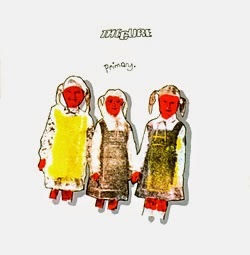 "Let Me Go" (AM8) by Heaven 17 (Virgin, 1982). Not a hit for the band in the UK, "Let Me Go" became a dance hit in the US and was a staple in alternative clubs in L.A. (The Lhasa, Seven Seas) and New York (Danceteria, the Milk Bar) through the summer of '83.
"Let Me Go" (AM8) by Heaven 17 (Virgin, 1982). Not a hit for the band in the UK, "Let Me Go" became a dance hit in the US and was a staple in alternative clubs in L.A. (The Lhasa, Seven Seas) and New York (Danceteria, the Milk Bar) through the summer of '83.  "Blue Monday" (AM10) by New Order (FAC 73, 1983). The biggest selling 12" single of all time, "Blue Monday" introduced the concept that synthesizers, drum machines and Indie music could live happily ever after, and that a Top 40 record didn't have to fit into a three minute soundbite. In hindsight it's simple to see how this track has affected music trends in the last 30 years. At nearly 7:30 secs, "Blue Monday" is one of the longest tracks ever to chart in the UK or the U.S. B/W "The Beach."
"Blue Monday" (AM10) by New Order (FAC 73, 1983). The biggest selling 12" single of all time, "Blue Monday" introduced the concept that synthesizers, drum machines and Indie music could live happily ever after, and that a Top 40 record didn't have to fit into a three minute soundbite. In hindsight it's simple to see how this track has affected music trends in the last 30 years. At nearly 7:30 secs, "Blue Monday" is one of the longest tracks ever to chart in the UK or the U.S. B/W "The Beach."
Published on June 06, 2018 04:44
June 5, 2018
New Order - Brotherhood
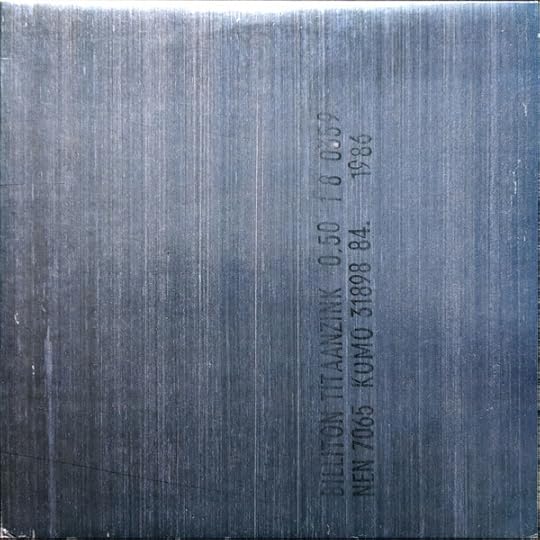 New Order's legacy lies in their singles, indeed, "Blue Monday" is still the biggest selling 12" single of all time (with "Bizarre Love Triangle" not far behind). If you want to discuss New Order, you do it through their singles or around them. "True Faith." "The Perfect Kiss." "Shellshock." They sit, stone-cold and classic, between you and any point you want to make about NO.
New Order's legacy lies in their singles, indeed, "Blue Monday" is still the biggest selling 12" single of all time (with "Bizarre Love Triangle" not far behind). If you want to discuss New Order, you do it through their singles or around them. "True Faith." "The Perfect Kiss." "Shellshock." They sit, stone-cold and classic, between you and any point you want to make about NO.Interestingly, NO put "Bizarre Love Triangle" right in the middle of Brotherhood next to a mess of tracks most people have never heard of, made their "rock" record right when they were making their biggest breakthroughs as a "dance" band and didn't care because the final product was stellar enough to stand up to those self-imposed hurdles.
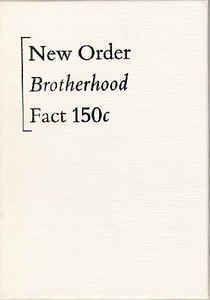 The rough split between a more "band" focused first side and more "electronic" second side may either sound like a confusing mistake or marketing gimmick, but it allows the band to show off the many facets of the New Order sound. This division also allows Brotherhood an intriguing arc: the turmoil of the first side makes the joy and calm of the second side feel hard-earned and meaningful.
The rough split between a more "band" focused first side and more "electronic" second side may either sound like a confusing mistake or marketing gimmick, but it allows the band to show off the many facets of the New Order sound. This division also allows Brotherhood an intriguing arc: the turmoil of the first side makes the joy and calm of the second side feel hard-earned and meaningful.It's the layered synthpop that's at the core of the New Order sound, and it's fairly indicative that the three standouts are the LP's most synth-dominated tunes. Among these favorites, "Bizarre Love Triangle" is the band's best straightforward radio hit, whereas "Paradise" and "Angel Dust" rely upon immaculately crafted walls of synth highlighting the group's post-punk leanings. Among the guitar-dominated tracks, I'm fond of "Weirdo" and "As It Is When It Was", whereas "All Day Long" effectively blends the synth and guitar-dominated strategies. While Movement was a JD clone, Brotherhood is the definition of Joy Order.
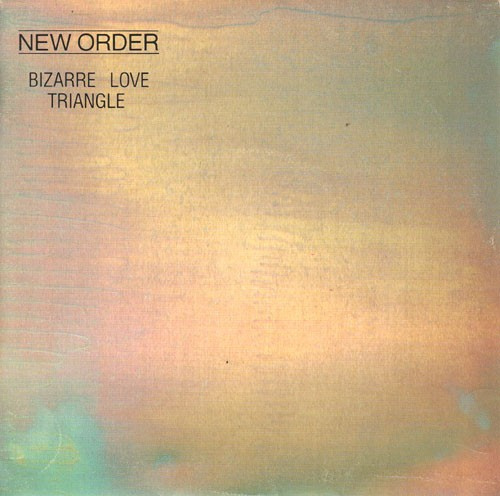
Published on June 05, 2018 04:14
June 4, 2018
Low Life
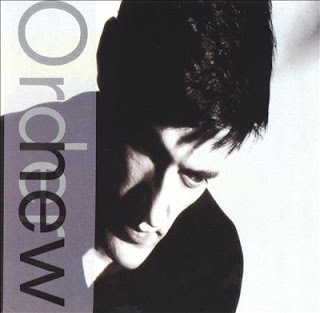 Low Life was the point when New Order became New Order in it's own right, no longer the ruins of Joy Division. A mixed blessing actually, and probably the spot where their legacy gets so damned confused in the first place. Between Power, Corruption and Lies and this LP NO dropped a couple singles that made titanic waves in the nascent British club scene and even coerced their way into the clubs of New York and Los Angeles. For Low Life, the foursome fails to hybridize that post-punk/electronic vibe as brilliantly as on the earlier albums, yet they craft an album that allows the eclecticism of the repertoire to mingle and coexist. For the first LPs it was difficult to distinguish the difference between Bernard Sumner and Ian Curtis. There was nothing forced in the mimicry, simply a lack of disassociation that worked in the same way that Trick of the Tail was the perfect follow-up to Peter Gabriel's Genesis. Movement was definitively a New Order Album but the Joy Division overtones were overwhelming. PC&L was the next step in the evolution (and an LP I go back to more readily), but Low Life was a leap into wicked full-on 80s synth pop chock full of programming, drum machines and synths while Hook commandeered the melody with that incredible bass and Sumner wrecked shit on guitar. New Order could have just as easily been a crazy mess.
Low Life was the point when New Order became New Order in it's own right, no longer the ruins of Joy Division. A mixed blessing actually, and probably the spot where their legacy gets so damned confused in the first place. Between Power, Corruption and Lies and this LP NO dropped a couple singles that made titanic waves in the nascent British club scene and even coerced their way into the clubs of New York and Los Angeles. For Low Life, the foursome fails to hybridize that post-punk/electronic vibe as brilliantly as on the earlier albums, yet they craft an album that allows the eclecticism of the repertoire to mingle and coexist. For the first LPs it was difficult to distinguish the difference between Bernard Sumner and Ian Curtis. There was nothing forced in the mimicry, simply a lack of disassociation that worked in the same way that Trick of the Tail was the perfect follow-up to Peter Gabriel's Genesis. Movement was definitively a New Order Album but the Joy Division overtones were overwhelming. PC&L was the next step in the evolution (and an LP I go back to more readily), but Low Life was a leap into wicked full-on 80s synth pop chock full of programming, drum machines and synths while Hook commandeered the melody with that incredible bass and Sumner wrecked shit on guitar. New Order could have just as easily been a crazy mess.  Low Life opens with the folksy story of a Vietnam vet returning home to find his wife dead on the floor. She's clutching a telegram informing her of the soldier's death. allmusic described the tune as a campfire singalong, not unlike Harry Chapin's "Taxi" or "Phantom 409." "Love Vigilantes" was a huge success on American alternative radio and its popularity overshadowed just how distant this song was from Joy Division, a straight on rock song that almost doesn't fit into the repertoire on either end. It's the LP's second track, though, that has remained a staple on my playlist for the past thirty years, if not this version: "The Perfect Kiss" was released simultaneously as a 12" single that is my choice for single of singles (also available on the compilation Substance). The track's stressed rhythmic undercurrent and flawless dance beat are at the mercy of endless counterpoint. "The Perfect Kiss" would make JS Bach's head spin. The 12" made it to No. 5 on the US dance track list and ranks as Stereogum's No. 1 NO single. The lyrics are deceiving as well and point out how clever New Order have always been in terms of poignant electronica: "My friend he took his final breath./ Now I know the perfect kiss is the kiss of death." What masquerades as a love song ("We believe in the land of love") quickly becomes a requiem, somehow simultaneously remaining one of the best dance tracks of the 80s.
Low Life opens with the folksy story of a Vietnam vet returning home to find his wife dead on the floor. She's clutching a telegram informing her of the soldier's death. allmusic described the tune as a campfire singalong, not unlike Harry Chapin's "Taxi" or "Phantom 409." "Love Vigilantes" was a huge success on American alternative radio and its popularity overshadowed just how distant this song was from Joy Division, a straight on rock song that almost doesn't fit into the repertoire on either end. It's the LP's second track, though, that has remained a staple on my playlist for the past thirty years, if not this version: "The Perfect Kiss" was released simultaneously as a 12" single that is my choice for single of singles (also available on the compilation Substance). The track's stressed rhythmic undercurrent and flawless dance beat are at the mercy of endless counterpoint. "The Perfect Kiss" would make JS Bach's head spin. The 12" made it to No. 5 on the US dance track list and ranks as Stereogum's No. 1 NO single. The lyrics are deceiving as well and point out how clever New Order have always been in terms of poignant electronica: "My friend he took his final breath./ Now I know the perfect kiss is the kiss of death." What masquerades as a love song ("We believe in the land of love") quickly becomes a requiem, somehow simultaneously remaining one of the best dance tracks of the 80s. There are some who would insist that it takes until Brotherhood for the band to start sounding indie again. I'll buy that. If anything Low Life is too perfect, too tight; therein lies its flaw: yeah, too perfect.

Published on June 04, 2018 04:57



